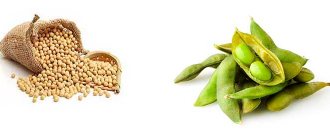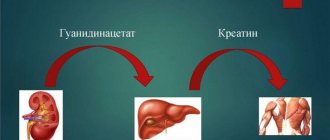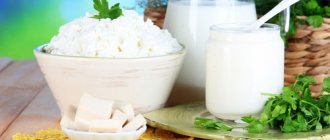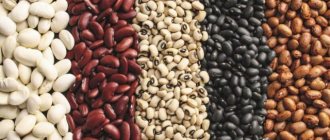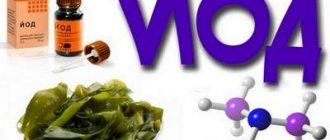What is fiber, what is it for, and what are its health benefits?
Fiber is a polysaccharide that, when completely broken down, produces glucose. It creates the basis of cellular tissues, one might say, the same as cellulose. They enter the human body only through food products of plant origin in the group of carbohydrates, which are not digested by gastric juice. Dietary fiber can be divided into two types: “coarse” and “soft”.
To the first, you can add those products that contain cellulose. And the “soft” ones include pectins, resin, and cellulose. In other words, “soft” is soluble fiber.
In modern language, the term “dietary fiber” is often used - the coarsest part of the plant, which is practically not absorbed by the body, but at the same time brings maximum benefit to the food system. Due to the fact that the fibers have a coarser structure, they linger in the stomach, thus the feeling of hunger disappears and a feeling of imaginary satiety comes. As practice shows, in this case a person will need less food and then it is easier to follow a diet, and this contributes to a dramatic reduction in body weight, due to its cleansing.
Fiber for the body
Fiber perfectly copes with the problem of constipation, which is dangerous due to its intoxication. Also, one of the advantages is the ability of fiber to absorb 8-50% of carcinogens from the body, thus acting as a prevention of intestinal cancer.
Despite the fact that, due to its rough construction, fiber passes through the entire food chain practically unchanged, it does a lot of useful work along the way. This substance is of great importance for weight correction and proper nutrition, controls blood sugar levels, and reduces cholesterol. Fiber can be roughly compared to those materials similar to water and mineral salts; it does not saturate the body with energy, but helps the active functioning of organs and its vital functions.
What is fiber for weight loss
Fiber is a fibrous substance that serves as a protective coating for the cells of plant foods. When entering the human body, it is directly involved in digestive processes and cleansing the intestines. According to their properties, fiber is of two types:
- Insoluble. Removes bad cholesterol, waste and toxins, and unnecessary bile from the body. This includes cellulose and lignin.
- Soluble. It will help the stomach digest food faster and give you a feeling of fullness for a long time. These are pectin, gum and other substances responsible for the production of mucus in the gastric environment.
What is the daily fiber requirement for an adult and a child?
Modern nutritionists believe that the daily fiber intake is approximately 30-50 g for an adult, and for children 10 g + 1 g for each year of life. That is, it is normal for a 10-year-old child to consume at least 20 g of fiber per day.
- For those who want to say goodbye to extra pounds, the daily norm should be close to 35 g. But you should not immediately load your stomach with a full dose of fiber, since the body of a modern urban person is accustomed to more gentle food. If you suddenly switch to proper nutrition with foods that contain “coarse” fiber, you can get bloating and indigestion.
- During heat treatment, the structure of the fibers expands, thus to some extent losing its beneficial detoxifying properties, therefore it is recommended to consume vegetables and fruits raw. But if your body reacts negatively when eating raw food, then the best way out of this situation would be to steam the dish or simmer it a little, trying to leave the vegetables a little undercooked.
- For an expectant mother, fiber should make up a significant part of the diet. At a minimum, this is useful in the last months of pregnancy, since fiber acts as a means of preventing constipation. In the last few months, the baby puts significant pressure on the entire food system and the problem of constipation is familiar to every third pregnant woman.
Diet for diarrhea
If you have diarrhea, you should eat often, in small portions. The food should be warm. In cases of diarrhea following constipation, the diet consists of foods rich in carbohydrates, easily digestible, containing small amounts of indigestible substances.
At the same time, the consumption of animal proteins is limited, and foods that cause intestinal irritation are excluded. Fiber-rich foods, spicy seasonings, extracts from meat, fish, poultry, vegetables and mushrooms. Products containing tannins, salt, fried foods and all drinks containing alcohol.
Approximate nutrition
Breakfast - rosehip infusion with sugar, stale bread with butter and honey,
II breakfast - semolina porridge on water with butter,
Lunch - pureed fruit soup with cream, boiled potatoes, spinach,
Afternoon snack - stale roll with butter, mashed compote,
dinner - dumplings with cottage cheese, flower tea (linden or mint), crackers.
Menu option
For fermentative indigestion, the diet consists of excluding foods that enhance intestinal activity mechanically, chemically or thermally. And also in significantly limiting the consumption of foods containing carbohydrates.
Breakfast - tea with a very small amount of sugar, 2 soft-boiled eggs, 50 g of stale bread,
II breakfast - cottage cheese, 1 cracker,
Lunch - borscht with sour cream, skinny boiled meat or fish, boiled potatoes,
Afternoon snack - yogurt,
Dinner - boiled ham, 30 g of stale bread, cocoa in water with a very small amount of sugar.
The benefits of fiber and products containing fiber and pectins for weight loss
Considering fiber from a dietary point of view, many advantages can be removed, for example, the inability to digest fiber provides a significant advantage for overweight people. At a minimum, despite the fact that the body does not receive a single gram of energy from fiber, it does not receive a drop of calories! Therefore, fiber is extremely important in a proper and healthy diet, for normalizing weight and cleansing the body from the inside.
- Most weight loss products are based on the action of fiber, its ability to satisfy hunger for a long time and effectively curb appetite. But it is not at all necessary to swallow pills; in nature, there are many products containing both soluble and insoluble coarse fibers.
- Insoluble fiber is found in vegetables, fruits, legumes, carrots, and grains. They perform the work of a “sponge”, entering the body, as if “absorbing” liquid into themselves and improving bowel movements, taking toxic substances and harmful acids with them.
Products containing fiber
- The main sources of fiber include apples, beans, barley, citrus fruits, sunflower seeds, berries, and beets. Their action is more like jelly and gives a blissful feeling of fullness. In principle, foods rich in fiber often contain huge amounts of vitamins and minerals, and are low in fat and calories, which naturally explains the benefits of these foods for weight loss.
- Another rule for those who want to lose weight is to have a sufficient amount of water in the body, since fiber, in the absence of fluid, loses some of its properties and is not excreted from the body in time.
Beneficial properties of fiber
There are practically no calories in fiber. The benefit of the substance is to accelerate food processing and intestinal activity. Eating it daily prevents the accumulation and deposition of fats in the body. When the substance enters the stomach, a person quickly feels full, which prevents him from overeating.
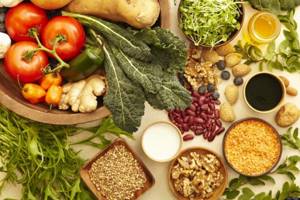
Fiber improves general metabolic processes in the body and regulates blood sugar levels. Insulin, on the contrary, predominates. The risk of diabetes and atherosclerosis is reduced.
The efficient functioning of the intestines directly depends on the presence of fiber in the body in the right amount. Without it, cleansing occurs slowly, which can cause fat deposition and the acquisition of extra pounds. With the help of a fibrous substance, heavy metal salts and unnecessary cholesterol are removed from the body. As a result, the vessels are also cleansed. Blood pressure stabilizes.
The presence of fiber in the daily diet will improve brain function, stabilize heart rate, and reduce the risk of cancer.
You can calculate the amount of the substance for daily food intake after consultation with a nutritionist.
The benefits of fiber and products containing fiber and pectins for constipation
Unfortunately, constipation is one of the most common problems of the modern generation, this is due to a “sedentary” lifestyle and dietary habits, which include fast food.
To prevent and treat constipation, fiber is essential! Thanks to its absorption ability, it is able to remove harmful substances and toxins from the body. Fiber takes on the state of a jelly-like mass, and in this way wraps and softens the solid fractions of the stool. In addition, fiber increases the amount of feces, which helps speed up the work of housing and communal services.
- To solve the problem of constipation, it is necessary that the diet include cereals with the addition of fruits, berries, bran, fresh vegetables, etc.
- But there is one “but”, the main thing is not to harm yourself by taking a large amount of fiber at once, this can cause cramps in the abdomen, flatulence or bloating, so you need to introduce fiber into your diet in small portions and gradually. Water consumption is also an essential part of a healthy daily diet. Water improves the performance of the sorbent.
- It is necessary to prevent constipation with the help of dietary fiber also during pregnancy and at a young age. Proper nutrition of a child can eliminate the development of constipation.
Foods high in coarse fiber: list, table
Cellulose - “rough” fiber is responsible for the volume of the food bolus and the absorption of water from the body. Serves as a preventative against constipation, the main source of which is porridge, or rather the hard shells of grains and legumes.
Bran has always been the best way to lose weight; it contains no calories, but gives you a feeling of fullness. Also, apples, carrots, Brussels sprouts, broccoli and even cucumbers are considered other sources of cellulose.
Content of coarse fiber in products per 100 gContent of coarse fiber in products per 100 g
Fiber-rich foods
Fiber is found in all plant foods. This includes fresh and dried fruits, fresh vegetables, berries, dried mushrooms, oilseeds and legumes, potato and Jerusalem artichoke tubers, hazelnuts and walnuts, rice and wheat grains, cereals from oats, wheat, buckwheat, millet and barley. And also natural cocoa powder.
The list goes on. Every person eats fibrous substances every day without thinking about it. The amount of fiber may vary. To lose weight, you need to eat from 20 to 40 grams of fibrous substance per day. The norm depends on age and gender. It is not always possible to calculate it at home. Pharmaceutical fiber will come to the rescue.
Vegetables and fruits high in fiber: list, table
Every person who cares about their health should definitely cleanse their body with vegetables, fruits, and berries. This is because they contain a substance called fiber. With its ability to absorb all bad substances, and as a sorbent it removes it from the body. If you do not follow the timely cleansing of the body, the most unpleasant consequences can occur. After all, many diseases begin with metabolic disorders and intoxication of the body.
Foods with the highest levels of fiber include:
- White cabbage, Brussels sprouts, cauliflower
- Broccoli
- Carrot
- Beet
- Corn
- Green beans
- Onion
- Tomatoes
- Potatoes with skin
- Bell pepper
- Chinese cabbage
- Raspberries
- Blackberry
- Strawberry
- Blueberry
- Oranges
- Apricots
- Grape
- Apple
- Melon
Nutritionists around the world consider fiber one of the leading steps in human digestion. Getting your daily dose is not so easy, but with bran and some supplements you can achieve what you want. Here another question arises: fiber itself is of plant origin and therefore it is believed that in order to get the required amount of the substance, it is best to eat raw fruits and vegetables. Is it necessary to use dietary supplements to feel full and comfortable if everything you need is “at hand”?
The most primitive fruits, it would seem at first glance, will ensure the activation of the housing and communal services, help get rid of a number of problems and diseases, and also, by their effect, prevent the accumulation of fats. Here are some of the most “important” vegetables and fruits:
Vegetables and fruits high in fiber
Fiber diet
But medications may not have time to have a therapeutic effect due to the high evacuation capacity of dietary fiber. Insoluble fiber is rough on the digestive tract and irritates the intestinal walls. The body receives an incentive to completely get rid of its contents as soon as possible. With long-term use, the body thickens the mucous membrane, its sensitivity decreases.
At the same time, its ability to absorb nutrients deteriorates. At a certain point, you have to increase the dose, otherwise the proven method of getting rid of constipation stops working. Reduced digestibility of food, spasms, as well as ulcerative colitis, sticking of intestinal walls, and other diseases of the digestive system can be a consequence of consuming excessively coarse insoluble fiber.
Or, conversely, insufficient intake of dietary fiber. Your email will not be published. This site uses Akismet to reduce spam. Find out how your comment data is processed. Products without fiber. Similar articles about losing weight: Healthy sweets Food compatibility Healthy snack at work Where to eat gluten Food compatibility table.
Add a comment Cancel reply Your e-mail will not be published. Whole wheat and bran breads, whole wheat pasta, oats, brown rice.
ulcerative colitis
Beets, avocados, white cabbage, cauliflower, broccoli and Brussels sprouts, corn, carrots, green beans, celery root, onions, bell peppers, green peas, potatoes with skin, sweet potatoes, pumpkin, tomatoes, zucchini and eggplant.
Almonds, cashews, walnuts, hazelnuts, peanuts, pistachios, pumpkin and sunflower seeds. Apples, dried apricots, raisins, prunes, dates, apricots, bananas, melon, grapefruit, peaches, oranges, pears, plums, raspberries, strawberries.
Lettuce, parsley, dill, green onion, fennel, asparagus, celery, spinach. All materials presented on the site are for educational purposes only and are not intended for medical advice, diagnosis or treatment.
The site administration, editors and authors of articles are not responsible for any consequences or losses that may arise when using site materials. Infectious and parasitic diseases Neoplasms Diseases of the blood and hematopoietic organs Diseases of the endocrine system Mental disorders Diseases of the nervous system Eye diseases Ear diseases Diseases of the circulatory system Diseases of the respiratory system Diseases of the digestive system Skin diseases Diseases of the musculoskeletal system Diseases of the genitourinary system Pregnancy and childbirth Diseases of the fetus and newborn Congenital anomalies developmental defects Trauma and poisoning.
Circulatory and respiratory systems Digestive system and abdominal cavity Skin and subcutaneous tissue Nervous and musculoskeletal systems Urinary system Perception and behavior Speech and voice General symptoms and signs Abnormalities.
The benefits and harms of fiber in nutrition
Acidosis [B] Basophils.. Bulimia [C] Vasectomy.. Miscarriage [D] Hallucinogens.. Medicinal mud [E] Darsonvalization.. Dopamine [F] Eunoscopy [G] Glands.. Fats [H] Hormone replacement therapy [I] Needle test...
Artificial coma [C] Cavern.. Coumarin [L] Laparoscope.. Lumbar puncture [M] Magnetic therapy.. Mutation [N] Anesthesia.. Nystagmus [O] Complete blood count.. Edema [P] Palliative care.. Pulse [R ] Rehabilitation.. Mole nevus [C] Secretin..
Blood serum [T] Thalamus.. Mast cells [U] Ursolic acid [F] Phagocytes..
Folic acid [X] Chemotherapy.. Hospice [C] Blood color index.. Cyanosis [W] Strain [E] Euthanasia.. Estrogens [I] Poison..
Stomach ulcer. Efficiency: kg per week Duration: day Cost of products: rubles per week. General rules Allowed foods Fully or partially restricted foods Menu Diet Contraindications Pros and cons Comments from nutritionists Reviews and results Price of the diet General rules A high-fiber diet is a type of low-calorie carbohydrate diet used to reduce body weight without causing debilitating feelings of hunger.
Food content of dietary fiber per g of product Bran 44.0 Legumes .0 Raw vegetables and fruits 2..8 Oatmeal, rice 8..5 Peanuts, almonds 3..2 Fresh garden herbs 4.0 Seeds 2..5 It should be noted that the products contain not just one, but different types of fiber, although in different concentrations. Author-compiler: Vladimir Konev - doctor, medical journalist Specialty: Epidemiology, Hygiene, Infectious diseases more details.
Note! The information about diets on the site is for reference and general information, collected from publicly available sources and cannot serve as a basis for making a decision about their use.
Before using the diet, be sure to consult a dietitian. Reviews Rate this article:.
In this article: Avoid High Fiber Foods Getting Fiber Back Into Your Diet 12 Sources. Fiber is an important component of any healthy diet. Fiber is found only in plant foods such as grains, fruits and vegetables and adds bulk to our food by allowing the digestive system to move digested food more easily. In addition, some people suffer from fiber intolerance and too much fiber can lead to stomach discomfort and diarrhea.
Blood thinning diet. Diet of a nursing mother for allergies in a child. Emergency diet. Chemical diet for 4 weeks.
Fat burning diet. Diet for heartburn, proper nutrition for heartburn. Millet diet. Diet with drinking days.
What are the dangers of a lack of fiber in the diet?
The lack of fiber in the diet is of course negative; at a minimum, fiber serves as an absorber of unfavorable substances. Otherwise, these substances accumulate and lead to intoxication of the body. A lack of fiber in the body can lead to housing and public utilities diseases, kidney diseases, and increases the risk of hemorrhoids; in addition, a deficiency of fiber may well provoke diabetes mellitus and constipation.
The fact is that we mostly eat food after heat treatment, during which the fiber swells and loses its properties. Thus, the receipt of microelements is reduced to a minimum. But what happens when there is a lack of fiber in the body:
- Intoxication - clogging of housing and communal services
- Decreased immunity
- Increased risk of heart disease
- Tendency to obesity due to frequent feelings of hunger
- Sugar levels may be higher than normal
The most unique thing about fiber is that it contains silicon - this is an essential microelement that can attract various viruses and harmful toxic substances.
Side effects of excess fiber in the body
High fiber diets are beneficial in the long term. But this lifestyle can lead to side effects. Remember that dietary fiber is not digested. Large amounts of fiber will have a difficult time passing through the digestive system. Try to stay in moderation and watch for symptoms of excess fiber in the body:
1. Feeling of discomfort. This is one of the most common signs of excess fiber in the body. This is accompanied by a feeling of heaviness and fullness in the stomach. Appetite decreases. For several hours after eating, you still feel extra full. It's difficult to start your next meal when you still feel discomfort from the previous one.
2. Bloating. Large amounts of fiber in the gastrointestinal tract can lead to bloating and gas. Bacteria in the colon digest a large amount of fiber. As a result, gas is produced. Bloating and gas are often accompanied by painful sensations.
3. Diarrhea or constipation. If you don't drink enough fluids while on a high fiber diet, it will lead to constipation. The main culprit is soluble fiber, which can be found in fruits and oatmeal. If constipation is not treated, intestinal obstruction will occur. Reducing your intake of this type of dietary fiber will reduce the risk of constipation. On the other hand, excess insoluble fiber found in greens or wheat can quickly push the contents of the gastrointestinal tract. This will cause diarrhea.
4. Poor absorption of nutrients. Poor nutrient absorption is the least obvious side effect of consuming high-fiber foods. But in the long term, it can cause serious damage to your health. Fiber can bind and reduce the body's absorption of certain minerals: calcium, magnesium, iron and zinc.
However, studies conducted in humans and animals have not yet confirmed a decrease in absorption. Decreased mineral absorption may be compensated for by fermentation of fiber in the colon. This process releases bound minerals and promotes their absorption. In any case, don't forget about nutrients while on a high fiber diet.
Products that do not contain fiber: list, table
Of course, fiber is and will always be an integral part of a healthy diet. But there are unique cases in which fiber intake approaches a minimum, for example, in diseases such as diverticulitis and chronic diarrhea. Moreover, there are individual cases of intolerance to fiber itself. To improve your health, you should listen to your doctor and follow a diet containing minimal fiber.
As you follow the diet, it is worth adding meat to your diet, especially meat after heat treatment! Also, you should do what you do with vegetables and fruits, for example, lean towards using canned food. In any case, the diet allows you to lose excess weight and helps improve bowel movements.
Here are some tips for a low fiber diet:
- Instead of a fresh apple, for example, it is better to eat applesauce or jam; you can simply peel the peel, since it contains the largest amount of building material. This applies to all fruits.
- Regarding vegetables, preference should be given to seedless, soft ones. Peel the potatoes. Vegetable juices can also be classified as drinks with minimal fiber content.
- It is worth excluding whole grains from your diet, they contain a high percentage of fiber. It is better to replace them with pasta, white rice, semolina, cut rice, white bread.
- Also, you need to include animal products and fish in your daily menu. Because they have no fiber at all.
- Fermented milk products in minimal consumption are also allowed.
- Milk
Table of low fiber foods per 100 g of product
How to Eat (and Recover) a Low-Fiber Diet
Your doctor will tell you about specific dates within which you should return fiber products or tell you about limits on fiber intake. Be sure to ask him about what types of fiber you can eat, how you can bring fiber back into your community, and what the long-term outlook is for you. Don't forget that any time you add or subtract large amounts of fiber, you are likely to experience changes in your bowel habits, such as bloating or constipation. Add fiber gradually.
If you've been on a low-fiber diet for a long time and want to reintroduce it into your diet, it's important to do so gradually. Drink plenty of water. When increasing your fiber intake, it is very important to remember to drink enough water.
Fiber is capable of absorbing water, so you will have to drink more water to cover this fluid absorption. To calculate the amount of liquid that you will have to drink daily, you need to divide your weight by If you weigh 90 kg, then you need to drink 3 liters of water daily.
Avoid drinks containing sugar and caffeine. Water, fruit water, coffee and decaffeinated tea are good choices. Tips Start gradually reducing your fiber intake.
What is the difference between bran and fiber: comparison
Bran and fiber, due to their benefits, are undoubtedly at the forefront of the healthy diet of modern generations. Comparing these two substances, of course, is the same as comparing pectin and an apple. Here's the thing:
Bran is the residue after grinding flour, that is, the coarse part of the grain. Bran is rich in fiber, almost 75%, but in addition to fiber, the warehouse also includes macro- and microelements, including B vitamins. In other words, people who buy bran for the purpose of obtaining fiber are not mistaken at all. But bran has more calories than its pure components.
For example, 100 g of bran contains 250 kcal, and the fiber itself contains a maximum of 35 kcal. This is due to the fact that in addition to the “sponge” function performed directly by the fiber itself, bran also carries protein, AA, starch and vitamins. And this is what gives bran its incredibly healing and beneficial qualities. And also, this is the most widely available product that will provide the daily requirement of dietary fiber.
Fiber is originally a dietary fiber from which all plant tissues are built. It is part of vegetables, fruits, berries and bran. Fiber is required to optimize the functioning of housing and communal services, as well as improve intestinal flora. This is a low-calorie product in its pure form, often used in diets.
Fiber for the body: contraindications
Of course, fiber is necessary for a person to improve the functioning of housing and communal services, cleanses the blood and has a beneficial effect on the microflora of the stomach, helps improve immunity and overall health. It is included in almost all products of plant origin, in the form of pectins, cellulose, hemicellulose, etc.
Unfortunately, there are some contraindications when using this wonderful substance.
A large number of people with various diseases, for example:
- ulcer - peptic ulcer of the stomach or duodenum
- individual intolerance to the product
- gastritis
- enteritis and enterocolitis
- diarrhea
- chronic bowel diseases
- leaky gut syndrome
Despite the fact that fiber is not so easy to obtain, there are cases of an overabundance of the product in the body, which does not have a very pleasant result. Leads to bloating, flatulence, fatigue, gas, skin rashes, increased blood sugar, and can also cause allergies.
Types of pharmaceutical fiber for weight loss
Pharmacies offer a wide selection of fiber for dietary purposes. It is sold in different forms: tablets, dietary supplements, powders, granules, liquid. The most common preparations are: Siberian fiber, fiber based on wheat germ, pumpkin and milk thistle.
Before purchasing, carefully study the composition for the ratio of soluble and insoluble substances.
The drug should be selected based on the purpose of use: cleansing or weight loss. It is best to start with the first one.
Siberian fiber is in demand among buyers. The product contains only natural fibers extracted from fresh plant products. No additives or flavorings are used in the production of dietary supplements. You will find many other nutrients here. Siberian fiber is prepared for weight loss and to cleanse the body. Sold in powders, tablets and capsules.
In the pharmacy you will also find sports cocktails, diet activators, and health cocktails. When choosing, be sure to pay attention to the composition.
You should not purchase drugs based on artificial fibers and various additives.



